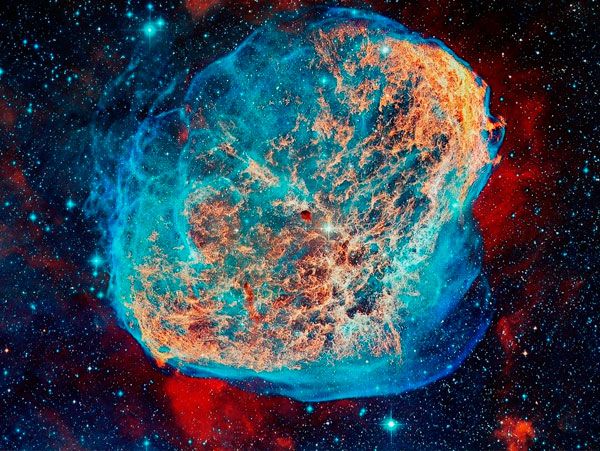New publications
Astronomers have recorded the demise of a "sun" from another galaxy
Last reviewed: 02.07.2025

All iLive content is medically reviewed or fact checked to ensure as much factual accuracy as possible.
We have strict sourcing guidelines and only link to reputable media sites, academic research institutions and, whenever possible, medically peer reviewed studies. Note that the numbers in parentheses ([1], [2], etc.) are clickable links to these studies.
If you feel that any of our content is inaccurate, out-of-date, or otherwise questionable, please select it and press Ctrl + Enter.
Astronomers who process information obtained using the Hubble telescope have demonstrated the latest image of the death of one of the celestial bodies, similar in features to the Sun we know.
The specialists made the photograph confirming the death of the star available for public viewing, publishing it on the pages of the official Hubble website.
According to scientists, they actually had to witness a catastrophe of cosmic scale: astronomers managed to see the death of a celestial body in such detail for the first time. It must be admitted that the picture turned out to be very clear and detailed: it shows with the naked eye the moment when the space object transforms into a planetary-nebulous state. This process, as experts point out, occurs with the release of a huge number of dust and gaseous particles, which in scientific circles is called a nebula.
The resulting nebula (called Hookah, or OH 231.8 + 04.2) is an extremely rare and clear example of the death of a large celestial body. Its location is determined to be more than 5 thousand light years from planet Earth: this is the constellation Puppis.
How did the death of a star with a mass approximately eight times greater than that of the Sun occur?
At the final stage of its life cycle, a space object, inside which the fuel storages are exhausted, undergoes the process of "red giant". For reference, a red giant is a star with a high degree of luminosity and with extended shells. Of the known stars, Arcturus, Gacrux, Aldebaran, etc. had similar characteristics.
At this stage, the star, which has grown immeasurably in size, sheds part of its shell, transforming over time into a relatively smaller, hot ball. Since the matter is heated from within, the nebulous substance is emitted across the entire electromagnetic spectrum, which cannot go unnoticed by various observational telescopes.
In this particular situation, scientists were able to see how the particles ejected by the star spread in different directions at the maximum speed of about 1 million km/h. At the same time, in a short period of time, the nebula expanded to a size of 0.7 light years.

It is expected that over the next few thousand years, the protoplanetary cloud will grow even larger, turning directly into a planetary nebula.
It is noteworthy that the protoplanetary nebula under study, in addition to the name Hookah, was given another name – Rotten Egg. Scientists explained this fact by the fact that the object contains a large number of molecular particles of hydrogen sulfide and sulfur dioxide.
In general, planetary nebulae are unique space objects that correspond to the final phase of the life of stars, like the Sun. Each such object has a spherical gas shell and an outer stellar layer that is rejected after losing its stable state. Observing such nebulae is difficult: they are usually characterized by low surface brightness and small angular size. Therefore, the information obtained with the Hubble telescope can be considered unique.
